UPDATED ANSWER:
Before I introduce this algorithm, I need to define two terms: inversion and polarity.
Inversion: A pair of objects that are in the reverse order from where they ought to be. For more information on inversion, refer Counting inversions in an array
Polarity of a puzzle is whether the total number of inversions among all tiles is even or odd. A puzzle with 10 inversions has even polarity; a puzzle with 7 inversions has odd polarity.
Consider 3x3 puzzle like this:
| 6 | 3 | 2 |
| .. | 4 | 7 |
| 5 | 1 | 0 |
Counting all inversions here, we get: (i) 6 is inverted with 0, 1, 2, 3, 4 and 5. (ii) 3 is inverted with 0, 1, and 2. (iii) 2 is inverted with 0 and 1. (iv) 4 is inverted with 0 and 1. (v) 7 is inverted with 0, 1 and 5. (vi) 5 is inverted with 0 and 1. (vii) 1 is inverted with 0. In total we have 19 inversions.
If the width of puzzle is even number then moving a tile up or down will reverse the polarity so it is important that the puzzle is having even polarity when the empty tile is in last row. For this we will add the distance of the empty tile from the bottom row to our total inversions.
Now we know that a puzzle is solvable if it has even polarity (or permutations). So if our polarity is even then our problem is solved but for odd polarity we have to do this:
If the empty tile is not in the first row, then swap first two adjacent tiles in first row. This will change the polarity by 1 and we will have solvable puzzle having even polarity.
But if empty tile is in first row then swap adjacent tiles in last row. This would make puzzle solvable. So at the end you always end up with a solvable puzzle.
I hope I satisfy the answering requirements of stackoverflow for this question.
